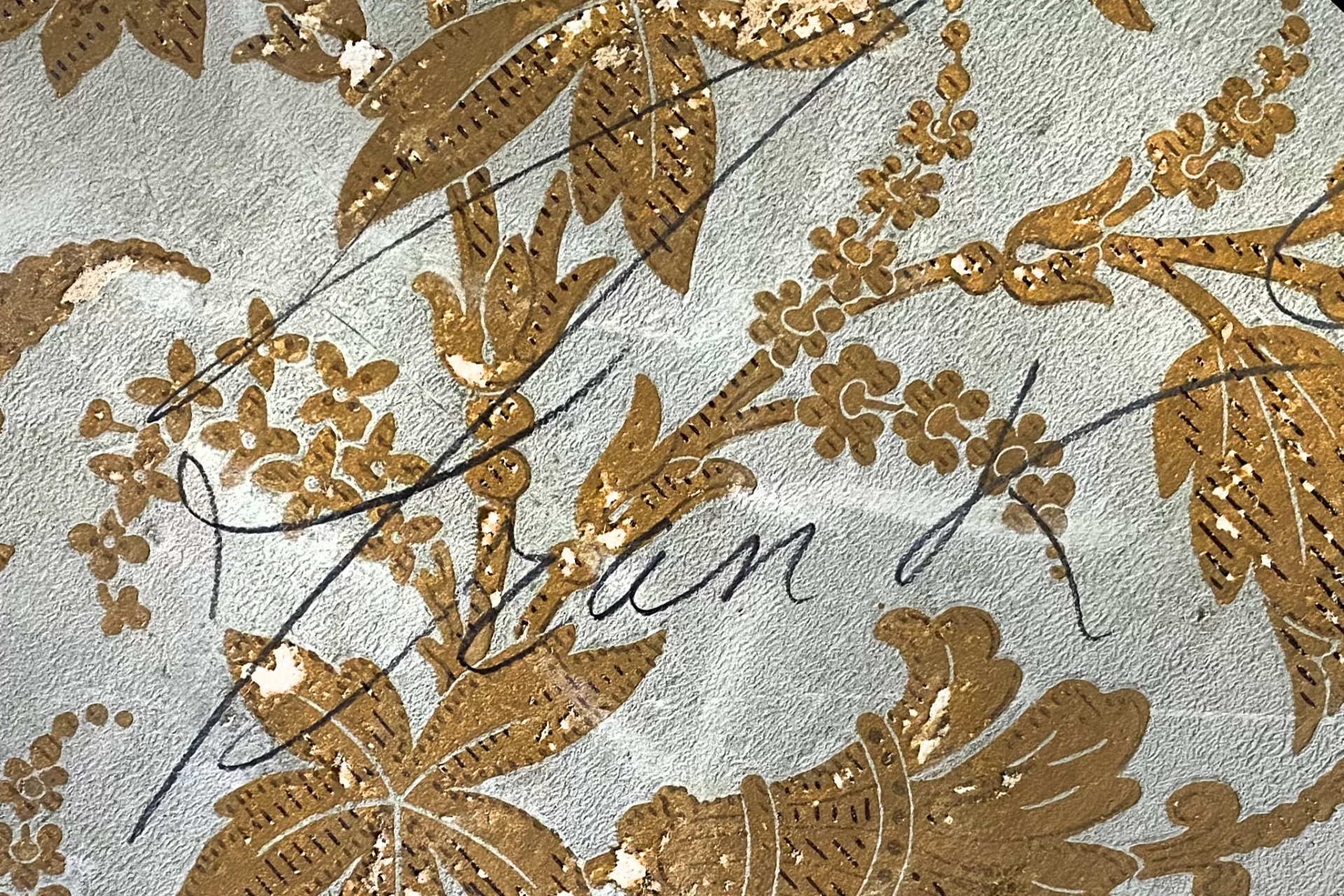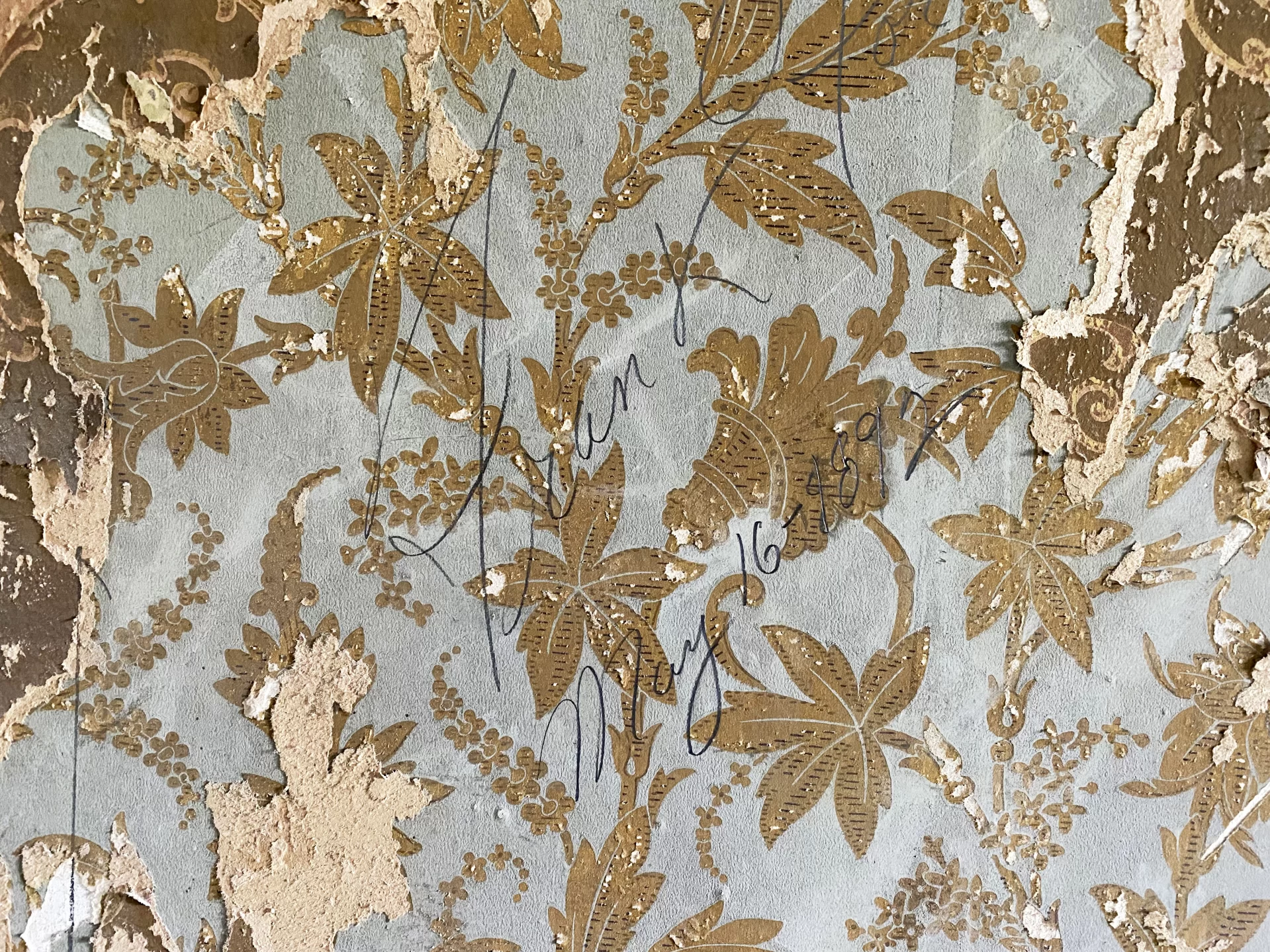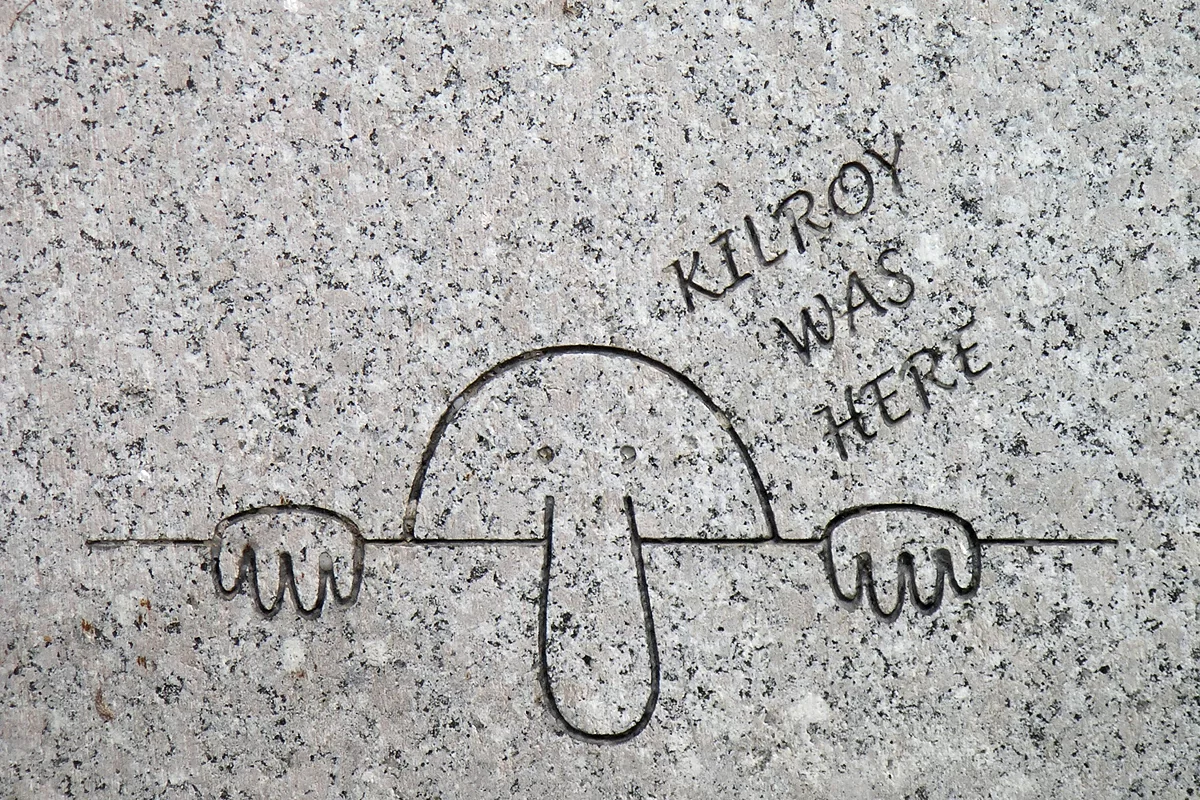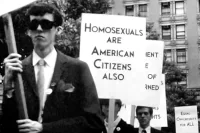
“Yes, that’s my name,” said the man on the other end of the phone. Pause. “But I didn’t write it.”
A couple of weeks ago, we published a story chronicling our efforts to determine the full name of a fragment of a signature — Fran K.? Frank? — found last summer when workers replaced old slate chalkboards with new ones in a campus building. The building was historic Hathorn Hall, and the pencil signature was on historic wallpaper.
So we went deep into Bates history, deciphering the date as “May 16 — 1892,” and poured efforts into finding a match — student, professors, anyone — to a “Fran K.” or “Frank” from the late 1800s.

Some folks joined the search, like Madison Fox ’19. “Thanks for this fun scavenger hunt!” Fox wrote in an email. Fox found an entry in the 1915 General Catalogue of Bates College for Mary Ruth Sweetser Quincy, Class of 1912, the daughter of Francis K. and Jennie Clement Sweetser.
Searching Google, Fox found that “Francis K. Sweetser” is buried at the Lindenwood Cemetery in Stoneham, Mass. Could the Bates signature be in memory or honor of Francis Sweetser by his Bates daughter?
That’s great sleuthing. But right across the campus in Facility Services, there was no mystery about the name.
After posting the image and story on Facebook, Facility Services staff member Adam Wright offered a 20th century solution. The name is “Frank Ford,” he posted on Facebook. “I believe he was a carpenter at the college for some time. The date might be May 16–18, ‘92. Seen it in other places around campus.”

Reoriented to current times, we looked in our trusty Bates directory and, sure enough, there’s Bates retiree Frank Ford, age 88, who lives over on Gammon Avenue in Auburn. We gave him a call and, after some appropriate gatekeeping by his daughter (after all, we were asking about someone’s signature), Frank came on the line.
“Mr. Ford,” I said, “we found what we think is a signature of your name under a blackboard in Hathorn Hall.” Ford said it was his name, but that he didn’t write it. “Well, who did?” I asked. “Cliff Dow and Ray Fortier,” Ford replied.
Dow and Fortier were Bates carpenters, “very good carpenters,” explained Ford, who also liked “to horse around.”
Among the tradespeople at the Cutten Maintenance Center, the Frank Ford name is well known, as is Frank himself, recalled fondly by the long-timers there. The signature has been found by staff all over campus, whether behind sheetrock here and there or hidden on a wardrobe in Rand Hall, presumably custom-built by Dow and Fortier decades ago.
Indeed, “Frank Ford” seems to be a Bates version of “Kilroy Was Here,” the graffiti meme popular during World War II.

Ford was a jack of all trades in the maintenance shop. “I loved the variety.” He recalls being called in to fix a slew of broken windows in Smith Hall during the national draft protests in the winter of 1969–70. “It was colder than the dickens.”
Clifton Dow, who retired from Bates, died in 2012. Raymond Fortier has also passed away.
I asked Ford if he thought that Dow and Fortier were pranking their younger colleague by writing his name around campus, or honoring him.
“Well I don’t know,” Ford replied. “But since they’re both gone now, I’ll take it as an honor!”



